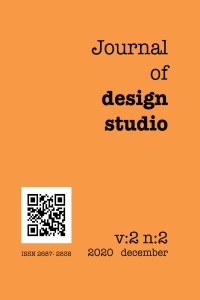Abstract
References
- Ackerman, J. S., & Slosburg-Ackerman, J. (2002). Origins, imitation, conventions: representation in the visual arts. MIT Press.
- Akin, O. (1978). How Do Architects Design? In Artificial Intelligence and Pattern Recognition in Computer Aided Design, ed. J.-C. Latombe. IFIP: North-Holland Publishing Company.
- Arashpour, M., & Aranda-Mena, G. (2017). Curriculum renewal in architecture, engineering, and construction education: Visualizing building information modeling via augmented reality. In 9th International Structural Engineering and Construction Conference: Resilient Structures and Sustainable Construction, ISEC 2017. ISEC Press.
- Azuma, R., Baillot, Y., Behringer, R., Feiner, S., Julier, S., & MacIntyre, B. (2001). Recent advances in augmented reality. IEEE computer graphics and applications, 21(6), 34-47.
- Bayazit, N. (2004). Investigating design: A review of forty years of design research. Design issues, 20(1), 16-29.
- Birt, J., Manyuru, P., & Nelson, J. (2017). Using virtual and augmented reality to study architectural lighting. Me, Us, IT, 17-21.
- Füssler,U 2008, “Design by Tool Design’, in Proceedings of Advanced in Architectural Geometry (AAG’08), Vienna, Austria.
- Goldschmidt, G. (1991). The dialectics of sketching. Creativity research journal, 4(2), 123-143.
- Kerr, J., & Lawson, G. (2020). Augmented reality in design education: landscape architecture studies as AR experience. International Journal of Art & Design Education, 39(1), 6-21.
- Koutamanis, A. (2003). A Biased History of CAAD: The bibliographic version. In Proceedings of eCAADe (Vol. 23).
- Milgram, P., Takemura, H., Utsumi, A., & Kishino, F. (1995, December). Augmented reality: A class of displays on the reality-virtuality continuum. In Telemanipulator and telepresence technologies (Vol. 2351, pp. 282-292). International Society for Optics and Photonics.
- Mitchell, W. J. (1990). The logic of architecture: Design, computation, and cognition. MIT Press.
- Suwa, M and Tversky, B What do architects and students perceive in their design sketches?: A protocol analysis, Design Studies Vol 18, No:4 (1997), pp 385-403.
- Smith, K. S. (2012). Architects Sketches. Routledge, 2-11.
- Sutherland, I. E. (1964). Sketchpad a man-machine graphical communication system. Simulation, 2(5), R-3.
- Thomas, P. C., & David, W. M. (1992). Augmented reality: An application of heads-up display technology to manual manufacturing processes. In Hawaii international conference on system sciences (pp. 659-669).
- URL-1, Pivot App. Retrieved 06.10.2020, from http://www.pivottheworld.com,
- URL-2, Google Developers Blog. Retrieved 06.10.2020, from http://developers.googleblog.com /2020/08/instant-motion-tracking-with-mediapipe.html
- URL-3, Unity. Retrieved 06.10.2020, from http://www.unity3d.com
- URL-4, Google ARCore. Retrieved 06.10.2020, from http://developers.google.com /ar/discover
- URL-5, MahaNakhon – Büro Ole Scheeren. Retrieved 15.11.2020, from https://buro-os.com/projects/mahanakhon
- URL-6, DownTown One Tirana – MVRDV. Retrieved 15.11.2020, from https://www.mvrdv.nl/ projects /388/downtown-one-tirana
- URL-7, Taipei Twin Towers – MVRDV. Retrieved 15.11.2020, from https://www.mvrdv.nl/ projects/371/taipei-twin-towers
Abstract
Computer technology has affected architectural studies as well as other professions. Architectural tools are used in every stage of the design and their primary goals are transferring and sharing the ideas of the architects’ mind. Nevertheless, in the early design phase, digital design tools remain ineffective in terms of idea development. Current design software and modeling tools are insufficient for the architect to quickly share ideas and generate alternative suggestions for fast sketching and modeling.
In this paper, a mobile design application is developed. It aims to support open-ended design thinking and to be fast and effective in terms of improving ideas. It is based on augmented reality and it works on mobile phones. In order to evaluate the application, a set of images consisting of tall buildings are shown to users. Then they are asked to model a similar form of their own. At the end, results are assessed with a questionnaire. Using the obtained data, the effectiveness of the digital mobile tool in the early design stage is discussed.
Keywords
Digital architectural design tools Early Design Augmented reality Mobile environment Tall buildings
References
- Ackerman, J. S., & Slosburg-Ackerman, J. (2002). Origins, imitation, conventions: representation in the visual arts. MIT Press.
- Akin, O. (1978). How Do Architects Design? In Artificial Intelligence and Pattern Recognition in Computer Aided Design, ed. J.-C. Latombe. IFIP: North-Holland Publishing Company.
- Arashpour, M., & Aranda-Mena, G. (2017). Curriculum renewal in architecture, engineering, and construction education: Visualizing building information modeling via augmented reality. In 9th International Structural Engineering and Construction Conference: Resilient Structures and Sustainable Construction, ISEC 2017. ISEC Press.
- Azuma, R., Baillot, Y., Behringer, R., Feiner, S., Julier, S., & MacIntyre, B. (2001). Recent advances in augmented reality. IEEE computer graphics and applications, 21(6), 34-47.
- Bayazit, N. (2004). Investigating design: A review of forty years of design research. Design issues, 20(1), 16-29.
- Birt, J., Manyuru, P., & Nelson, J. (2017). Using virtual and augmented reality to study architectural lighting. Me, Us, IT, 17-21.
- Füssler,U 2008, “Design by Tool Design’, in Proceedings of Advanced in Architectural Geometry (AAG’08), Vienna, Austria.
- Goldschmidt, G. (1991). The dialectics of sketching. Creativity research journal, 4(2), 123-143.
- Kerr, J., & Lawson, G. (2020). Augmented reality in design education: landscape architecture studies as AR experience. International Journal of Art & Design Education, 39(1), 6-21.
- Koutamanis, A. (2003). A Biased History of CAAD: The bibliographic version. In Proceedings of eCAADe (Vol. 23).
- Milgram, P., Takemura, H., Utsumi, A., & Kishino, F. (1995, December). Augmented reality: A class of displays on the reality-virtuality continuum. In Telemanipulator and telepresence technologies (Vol. 2351, pp. 282-292). International Society for Optics and Photonics.
- Mitchell, W. J. (1990). The logic of architecture: Design, computation, and cognition. MIT Press.
- Suwa, M and Tversky, B What do architects and students perceive in their design sketches?: A protocol analysis, Design Studies Vol 18, No:4 (1997), pp 385-403.
- Smith, K. S. (2012). Architects Sketches. Routledge, 2-11.
- Sutherland, I. E. (1964). Sketchpad a man-machine graphical communication system. Simulation, 2(5), R-3.
- Thomas, P. C., & David, W. M. (1992). Augmented reality: An application of heads-up display technology to manual manufacturing processes. In Hawaii international conference on system sciences (pp. 659-669).
- URL-1, Pivot App. Retrieved 06.10.2020, from http://www.pivottheworld.com,
- URL-2, Google Developers Blog. Retrieved 06.10.2020, from http://developers.googleblog.com /2020/08/instant-motion-tracking-with-mediapipe.html
- URL-3, Unity. Retrieved 06.10.2020, from http://www.unity3d.com
- URL-4, Google ARCore. Retrieved 06.10.2020, from http://developers.google.com /ar/discover
- URL-5, MahaNakhon – Büro Ole Scheeren. Retrieved 15.11.2020, from https://buro-os.com/projects/mahanakhon
- URL-6, DownTown One Tirana – MVRDV. Retrieved 15.11.2020, from https://www.mvrdv.nl/ projects /388/downtown-one-tirana
- URL-7, Taipei Twin Towers – MVRDV. Retrieved 15.11.2020, from https://www.mvrdv.nl/ projects/371/taipei-twin-towers
Details
| Primary Language | English |
|---|---|
| Subjects | Architecture |
| Journal Section | Research Articles |
| Authors | |
| Publication Date | December 20, 2020 |
| Published in Issue | Year 2020 Volume: 2 Issue: 2 |
This work is licensed under a Creative Commons Attribution 4.0 International License.
The articles published in Journal of Design Studio had been similarity checked by intihal.net

CALL FOR ARTICLES
Journal of Design Studio call for research papers on studios in all disciplines. Please submit your article by using Dergipark online submission system.



